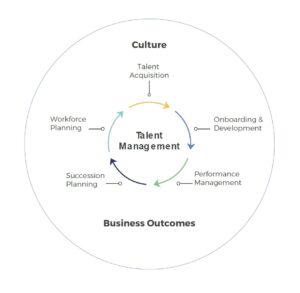
We all know the bad news. The US economy lost 20.5 million jobs in April 2020, according to the Bureau of Labor Statistics—by far the most sudden and largest decline since the government began tracking the data in 1939. The unemployment rate soared to 14.7% in April, its highest level since the BLS started recording the monthly rate in 1948. The last time American joblessness was that severe was the Great Depression.
But it’s not all bad news. Certain businesses associated with logistics and supply of critical goods are actually hiring…like crazy. Instacart is hiring 300,000 contract workers. Amazon is bringing on 175,000 new workers for its fulfillment centers and delivery network. We see additions of 50,000 each for CVS Health, Dollar General, and Walmart. Lowe’s is hiring 30,000 employees. FedEx is hiring. Ace Hardware is hiring.
A company like Amazon is used to scaling up for seasonal hiring but many businesses are not. Hiring thousands so quickly taxes the organization’s entire talent management system.

At Emerson, we think of talent management holistically; it supports the organization’s culture and helps achieve desired business outcomes.
When you need to scale quickly, here are some ideas to consider:
Talent Acquisition
Standard career fairs and job postings won’t work right now. What are the best ways to acquire talent? How can you quickly identify the best when supply exceeds demand due to high unemployment?
- Tap into communities like church groups, food banks, university campus online boards.
- Work with other companies that have laid off or furloughed workers.
- Apply AI technology to filter best applicants.
- While it may be tempting, don’t hire the first warm bodies. Maintain your recruiting rigor with a focus on the critical skills for the job as well as cultural fit. In some markets and industries, it’s a buyer’s market, so leverage it and don’t settle.
Onboarding
Measured, multi-week onboarding doesn’t cut it when hiring thousands at one time. How can you streamline the process?
Use a “speed dating” model. Allow groups of applicants for similar jobs to familiarize themselves with the end-to-end process in a few hours by moving quickly through the main steps or stations. Then, assign a given cohort to specific coaches for more detailed on-the-job training.
- Show short videos rather than live demos or blend videos with live learning. Note that videos don’t have to be professionally done to convey key points. Think TikTok, not Ken Burns. Use a tripod and your iPhone.
- Update your critical job aids. Simplify them to highlight the common, critical, and catastrophic–the “must-knows and dos” for the job. Think about how employees will use the job aids. Should they be laminated or posted? Should they only be online? Ensure they are multi-lingual if needed.
- Make it easy to spot coaches or team leads through clothing, like a colored cap or vest or a large badge. Post visible “Ask Me” signs on the tops of the coaches’ workspaces.
- Appoint a buddy to each new hire for a quick-and-dirty mentoring program.
Engagement and Retention
Turnover is costly. For workers earning $30,000 or less, the typical cost of turnover is 16% of annual salary, or $4,800. For workers earning less than $50,000 annually, average cost of replacement is 20% of annual salary, or $10,000. Five to ten thoursand for each entry level job? Multiply that by a thousand and you can see how turnover can hurt.
Unemployment is high so getting a replacement worker is easy, right? No! Every turnover requires replacement costs like recruiting, physical or drug testing, background verification, and training.
Source: https://busybusy.com/blog/reduce-employee-turnover-cost/
Putting a little effort into retaining those you hire will save you a lot of money.
- Make your work environment positive, comfortable, and safe!
- Focus on respect for employees. Provide supervisors with tangible examples of what “showing respect” looks like.
- Offer appreciation with unexpected small perks like periodic snacks–maybe a weekly delivery of fresh fruit or some other food your employees would enjoy.
- Recognize employees during staff meetings. Make it more personal; for example, ask leaders to send handwritten notes to employees’ homes.
Development and Performance Management
Yeah, we know what you’re thinking: hire now and worry about development later. But it’s never too early to think about how you’re going to evaluate, develop, and retain that new hire. You’ve just placed someone in an entry level job; what are the criteria to determine she’s ready to be a supervisor a month from now? How can you use development to avoid turnover?
- For job positions with the biggest hiring need, develop some simple evaluation criteria. Anticipate and document how you’ll close performance gaps and how you’ll promote those who are excelling across the board.
- Hiring is harder than firing, so be thoughtful about termination. For the harder-to-fill positions, how deep are the employee’s deficits? What is the return on investment for developing that person instead? How much effort can you afford to spend in developing a poor or mediocre performer?
By the way, be on constant lookout for new hires you want to retain and/or cross-train after your demand surge subsides.
Impact on Culture
Every employee contributes to the culture, including the new hires. When you’re hiring thousands of people at one time, they have the potential to impact the existing culture. That’s not necessarily a bad thing, but no company wants to change their company culture unwittingly.
- Set the stage by showing a video on the company culture, purpose, vision, and values during onboarding.
- Enlist high-profile company leaders to visit facilities and personally welcome some of your new hires. A high touch “hello and welcome” is more meaningful than a big, impersonal all-hands. The new hires who speak to the leader(s) will tell other new hires of the gesture and that’ll strengthen engagement and loyalty.
- If the new hires are located together, physical reminders like posters and company gear such as caps or tee-shirts can reinforce the company culture.
- Invest more time with the coaches, team leaders/supervisors, to ensure they role-model the culture. They are the closest to new hires and their impact is huge.
- Identify a few key behaviors that are imperative to maintaining your culture/values and bake those into performance evaluations. Then act quickly to address those who are counter-cultural.
It’s daunting to hire thousands in a matter of months. Hiring the right people in the right numbers will answer your business demands and yield the outcomes you want, including revenue, profitability, and brand reputation. Invest a little to do it right.
Scale fast but scale smart.




